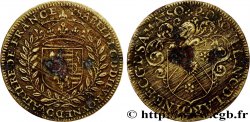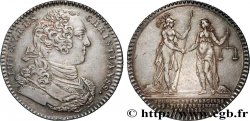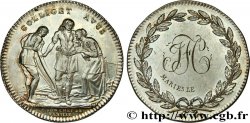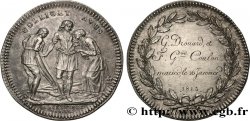fjt_072918 - NORMANDY (GENTRY AND TOWNS OF...) Jeton Ar 28, de Piperay 1647
Not available.
Item sold on our e-shop (2013)
Price : 175.00 €
Item sold on our e-shop (2013)
Price : 175.00 €
Type : Jeton Ar 28, de Piperay
Date: 1647
Metal : silver
Diameter : 28,5 mm
Orientation dies : 6 h.
Weight : 5,84 g.
Edge : lisse
Rarity : R2
Coments on the condition:
Usure de circulation régulière au droit avec un flan assez large. Usure plus importante au revers essentiellement au centre. Patine grise légère
Catalogue references :
Obverse
Obverse legend : VIR * PROBVS * PRÆEST.
Obverse description : Écu aux armes de Piperay soutenu par deux licornes et surmonté d’un heaume avec une tête de licorne en cimier.
Reverse
Reverse legend : NEMO. ME. IMPVNE. LACESSIT. ; À L'EXERGUE : .1647..
Reverse description : Un chardon.
Reverse translation : (Personne ne me provoque impunément).
Commentary
Les armes de la famille Piperay portent d’argent, à trois têtes de héron de sable posées deux et un, au chef d’azur chargé de trois molettes d’or. La famille est originaire de Marolles (canton de Lisieux, Calvados). On connaît en particulier Charles de Piperay, écuyer et seigneur de Marolles au début du XVIIIe siècle. Nous n’avons pas réussi, faute d’éléments suffisants, à attribuer ce jeton à l’un des membres de cette famille. La devise du revers est celle de l’Ordre du Chardon, second ordre en importance en Écosse après celui de la Jarretière.








 Report a mistake
Report a mistake Print the page
Print the page Share my selection
Share my selection Ask a question
Ask a question Consign / sell
Consign / sell
 Full data
Full data









